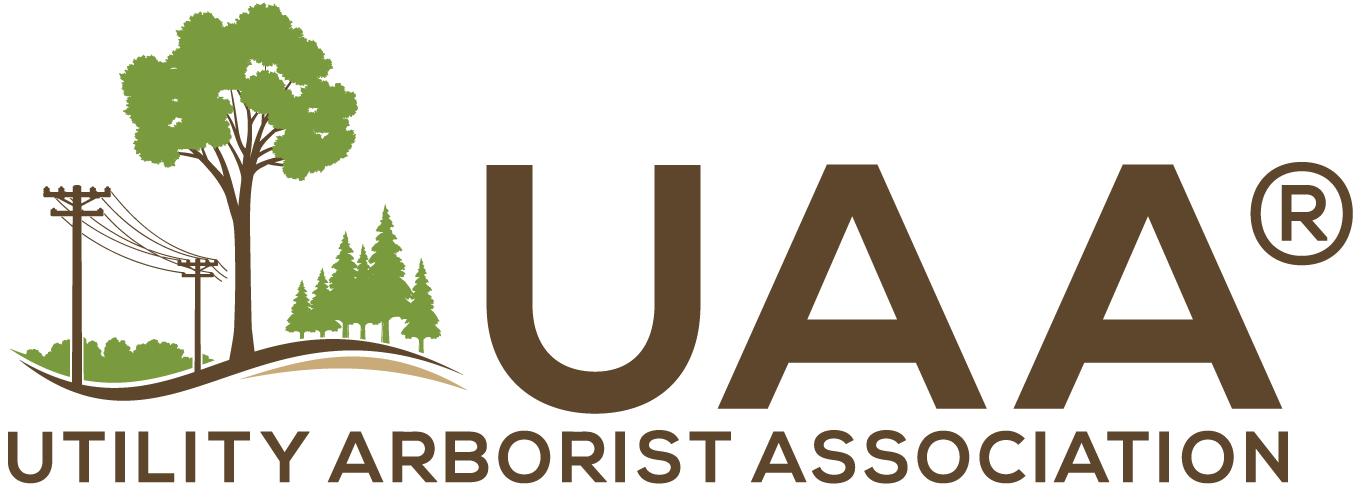While safety, reliability and legal compliance are at the heart of utility vegetation management, they are not the only consideration of a utility that must maintain vegetation. Part of our business and culture is good public and customer relations, and environmental stewardship. Of course, since utility vegetation management is a $3 billion per year undertaking, companies are concerned about costs, which affect their customers’ energy bills.
This complex set of concerns means no utility can have a simple vegetation management program. Sometimes, tree pruning is required. Sometimes it is total tree removal. On the very high voltage power lines and pipelines, the brush maintenance or the control of young vegetation is best. Each situation needs to be evaluated and a specific strategy implemented.
Tree Trimming and Pruning
Utilities that employ properly trained, professional utility vegetation managers try hard not to trim trees. Trimming implies indiscriminate location of cuts. The arboriculture industry has long understood that proper pruning is best for the tree’s health and best accomplishes the utilities goals of providing for long-term service reliability – in most cases. Most utilities adhere to the ANSI 300 national pruning standards or other standards in non-North American countries, and the ISA – International Society of Arboriculture Best Management Practices for Tree Pruning.
Frequency of pruning
Most deciduous trees (non-evergreen) quickly regrow after they have been pruned. This means utilities must prune the trees over and over again, as they re-encroach upon the lines. The length of time depends on the amount of clearance obtained at the time of tree work, the rate of tree growth and the amount of tree-line clearance to be maintained at all times. This in turn depends on tree species, tree size, local site conditions and the ever changing weather from year-to-year.
Extent of pruning
A very important factor determining the frequency of tree pruning is the amount of clearance that can be obtained when the work is done – the less clearance obtained the more frequently the tree must be pruned. It may seem that obtaining less clearance more often would be healthier for the tree but that is not necessarily the case. It is a tradeoff between more, smaller cuts more frequently or fewer, larger cuts less often. There is not a universal answer and each utility should set the line clearance or tree maintenance cycle based on local conditions.
Tree Removal
Since safety, reliability and legal compliance are the essential part of the equation, leaving a nice looking tree is often irreconcilable with quality of service. In this case, complete removal of the tree is often advised. Many utilities will apply a registered product to the cut stump to prevent it from sprouting and again becoming a maintenance problem. Many utility companies have a tree replacement program that provides vouchers that can be used to purchase proper replacement trees from local nurseries to encourage replanting.
Brush Maintenance
In many circumstances, tree pruning is simply inappropriate. This is particularly the case on the very high voltage transmission lines where electricity can arc from the electric conductors to taller vegetation. Much of the vegetation on electric transmission and pipeline corridors is best maintained by converting the vegetation community that is dominated by tall growing trees to lower growing vegetation communities. This conversion and subsequent maintenance is best accomplished using an integrated vegetation management (IVM) strategy. The national standard (ANSI A300 Part 7) defines IVM as a system of managing plant communities in which managers set objectives; identify compatible and incompatible vegetation; consider action thresholds; and evaluate, select, and implement the most appropriate control method or methods to achieve those objectives. The ISA has published a Best Management Practices for IVM as a practical guide to help utility vegetation managers implement the ANSI standards in the field.
The UAA encourages utilities to consider the Wire Zone-Border Zone (WZ-BZ) strategy in its implementation of IVM. The WZ-BZ strategy recognizes that plant species that are not compatible on some portions of the right-of-way may be compatible on others. This practice creates a more diverse plant community a better habitat for many wildlife species.

Wire Zone-Border Zone (WZ-BZ). Courtesy of Environmental Consultants, Inc.

 Josh Beaver is currently senior vice president of Eocene Environmental Group, a utility vegetation management (UVM) consulting and operations firm. Josh has more than two decades of experience within the UVM industry. He is currently responsible for relationship management and oversight of long-term UVM contracts throughout the United States and Canada. He considers customer and community communication to be vital aspects of his role, and he has a proven record of success working with utilities.
Josh Beaver is currently senior vice president of Eocene Environmental Group, a utility vegetation management (UVM) consulting and operations firm. Josh has more than two decades of experience within the UVM industry. He is currently responsible for relationship management and oversight of long-term UVM contracts throughout the United States and Canada. He considers customer and community communication to be vital aspects of his role, and he has a proven record of success working with utilities.
 Sam joins the UAA crew with over a decade of non-profit experience behind her. As our Partnership Coordinator, her focused efforts on building relationships with diverse funders will include crafting proposals, cultivating connections, and cohesively earning dedicated sponsors to support the sustainability of UAA substantially and empowering our programs. Well equipped with professional skills which include program development, public speaking, proposal writing, donor relations, working with diverse stakeholders, coalition building, and public-facing service. Sam’s educational background includes a BS in Animal Ecology with a minor in Animal Science, and a MA in Philanthropy and Non-profit Development.
Sam joins the UAA crew with over a decade of non-profit experience behind her. As our Partnership Coordinator, her focused efforts on building relationships with diverse funders will include crafting proposals, cultivating connections, and cohesively earning dedicated sponsors to support the sustainability of UAA substantially and empowering our programs. Well equipped with professional skills which include program development, public speaking, proposal writing, donor relations, working with diverse stakeholders, coalition building, and public-facing service. Sam’s educational background includes a BS in Animal Ecology with a minor in Animal Science, and a MA in Philanthropy and Non-profit Development. Tim is the Vice President of Safety & Training for the Townsend Tree Company, LLC.
Tim is the Vice President of Safety & Training for the Townsend Tree Company, LLC. Sara Dreiser is a Senior Program Manager with ComEd. She works with a team to oversee ComEd’s routine cycle maintenance and ComEd’s interruption investigation programs. She has been working in the Vegetation Management industry for close to 15 years.
Sara Dreiser is a Senior Program Manager with ComEd. She works with a team to oversee ComEd’s routine cycle maintenance and ComEd’s interruption investigation programs. She has been working in the Vegetation Management industry for close to 15 years. Matt Goff is a Transmission Vegetation Manager at Georgia Power Company. He lives in Brookhaven, GA with his wife, two daughters, and the family’s two dogs Sam, and Payton. For leisure, he enjoys sports with his family, bird hunting, and salt-water fishing.Matt holds a BSFR from the University of Georgia in Forest Resource Management and he graduated in 1997. He has worked in the vegetation management industry for 26 years. His work experience includes six years as a procurement forester for a forest products manufacturer, and 20 years in the utility vegetation management industry with Georgia Power.
Matt Goff is a Transmission Vegetation Manager at Georgia Power Company. He lives in Brookhaven, GA with his wife, two daughters, and the family’s two dogs Sam, and Payton. For leisure, he enjoys sports with his family, bird hunting, and salt-water fishing.Matt holds a BSFR from the University of Georgia in Forest Resource Management and he graduated in 1997. He has worked in the vegetation management industry for 26 years. His work experience includes six years as a procurement forester for a forest products manufacturer, and 20 years in the utility vegetation management industry with Georgia Power. Brandon graduated from Minnesota State University–Mankato with a B.S. in Geography. Brandon has been with Rainbow Tree Company since 2009 and has gained experience in several roles, including Business Developer for our utility products division, GIS Tree Inventory Analyst, and Technical Arborist. Brandon has been the Director of VM Services, the fastest growing division inRainbow Tree Company, since 2012.
Brandon graduated from Minnesota State University–Mankato with a B.S. in Geography. Brandon has been with Rainbow Tree Company since 2009 and has gained experience in several roles, including Business Developer for our utility products division, GIS Tree Inventory Analyst, and Technical Arborist. Brandon has been the Director of VM Services, the fastest growing division inRainbow Tree Company, since 2012. A winner of the David H Nabi Award for dedication and service, Dr. Robert Vanderhoof earned his Ph.D. from the College of Forest Resources at Mississippi State University in 1995. A veteran natural resource manager, Robert spent 15 years as Florida’s Deer Management Section Chief during which time he coordinated range management activities across Florida’s seven-million-acre wildlife management area system.
A winner of the David H Nabi Award for dedication and service, Dr. Robert Vanderhoof earned his Ph.D. from the College of Forest Resources at Mississippi State University in 1995. A veteran natural resource manager, Robert spent 15 years as Florida’s Deer Management Section Chief during which time he coordinated range management activities across Florida’s seven-million-acre wildlife management area system. Amanda Opp, Certified Utility Vegetation Management Professional Flathead Electric Cooperative, Integrated Services Manager, University of Wisconsin Stevens Point, Course Facilitator
Amanda Opp, Certified Utility Vegetation Management Professional Flathead Electric Cooperative, Integrated Services Manager, University of Wisconsin Stevens Point, Course Facilitator Jim Neeser is a business developer for the Davey Resource Group, a division of the Davey Tree Expert Company. Jim primarily works with utility companies to provide innovative and customized solutions. Jim earned his AA from Vermillion Community College in 1997 and his BS in Forestry with an emphasis on Hydrology and Soils from the University of Minnesota in 2000. Jim is an ISA Certified Arborist with the Utility Specialist endorsement. Jim has been involved in the UAA training committee for nearly a decade as a past chairman and is currently the treasurer and Champion of the finance committee. Jim spent his first 7 years in the industry as a field arborist in the commercial and utility markets. The last 10 years, Jim has been working with utility companies to enhance their Integrated Vegetation Management programs. Jim’s other interests include spending time with his family, sports, hiking, fishing and coin collecting. Jim is also active with the Boy Scouts of America as an Eagle Scout. Jim lives in Forest Lake, MN with his wife and 2 children.
Jim Neeser is a business developer for the Davey Resource Group, a division of the Davey Tree Expert Company. Jim primarily works with utility companies to provide innovative and customized solutions. Jim earned his AA from Vermillion Community College in 1997 and his BS in Forestry with an emphasis on Hydrology and Soils from the University of Minnesota in 2000. Jim is an ISA Certified Arborist with the Utility Specialist endorsement. Jim has been involved in the UAA training committee for nearly a decade as a past chairman and is currently the treasurer and Champion of the finance committee. Jim spent his first 7 years in the industry as a field arborist in the commercial and utility markets. The last 10 years, Jim has been working with utility companies to enhance their Integrated Vegetation Management programs. Jim’s other interests include spending time with his family, sports, hiking, fishing and coin collecting. Jim is also active with the Boy Scouts of America as an Eagle Scout. Jim lives in Forest Lake, MN with his wife and 2 children. Adam’s experience includes leading business development strategies for a utility vegetation management consulting firm, vegetation management field operations at two major investor-owned utilities in the southeastern US, project management at a variety of utilities in the mid-Atlantic and southeastern regions, and vegetation management program development and assessments across the country. His utility arboricultural experience provides a broad understanding of the many different methods used to create a successful utility right-of-way, vegetation management program, including remote sensing, data analytics, optimization, and the utilization of third-party consulting foresters for planning and auditing duties.
Adam’s experience includes leading business development strategies for a utility vegetation management consulting firm, vegetation management field operations at two major investor-owned utilities in the southeastern US, project management at a variety of utilities in the mid-Atlantic and southeastern regions, and vegetation management program development and assessments across the country. His utility arboricultural experience provides a broad understanding of the many different methods used to create a successful utility right-of-way, vegetation management program, including remote sensing, data analytics, optimization, and the utilization of third-party consulting foresters for planning and auditing duties. Craig works for Pacific Gas and Electric as a Principal Program Manager in Land Management. His career spans 30 years in the utility industry serving numerous roles. He is an ISA Certified Arborist, Utility Specialist, and hold his TRAQ and is a TCIA Certified TreeCare Safety Professional. Craig has been engaged and involved in the UAA for many years, starting back in 2008. He then wanted more so he ran for UAA President and was elected in 2014. Today, Craig looks back over his 30-year career and wouldn’t change a thing, he’s made life-long friends and considers many as mentors. He also claims he would not be where is in his career if it weren’t for these people, and pledges to pay it forward to support others in their success.
Craig works for Pacific Gas and Electric as a Principal Program Manager in Land Management. His career spans 30 years in the utility industry serving numerous roles. He is an ISA Certified Arborist, Utility Specialist, and hold his TRAQ and is a TCIA Certified TreeCare Safety Professional. Craig has been engaged and involved in the UAA for many years, starting back in 2008. He then wanted more so he ran for UAA President and was elected in 2014. Today, Craig looks back over his 30-year career and wouldn’t change a thing, he’s made life-long friends and considers many as mentors. He also claims he would not be where is in his career if it weren’t for these people, and pledges to pay it forward to support others in their success. Erin Creekmur has been in the UVM industry for over 20 years. After graduating with a Bachelors in Botany from Northern Arizona University she relocated to Northern California to start her professional career. Starting as a consulting utility pre-inspector with Western ECI she quickly moving up to the ranks to Supervisor under the tutelage of folks like Nelson Money. In 2004, Erin joined PG&E as a Quality Assurance Auditor for the VM program. Eventually becoming the Program Manager for the North Coast Division, helping stand up the beginnings of CEMA as the Emergency Drought Response Initiative Lead for the Enhanced Inspection & Mitigation Program, targeting off-cycle hazard trees across the system. In 2015, Erin moved back to her home state of Arizona and took the role of Division Supervisor with Arizona Public Service, managing both transmission and distribution UVM programs out of the Flagstaff area. As part of her role with APS Forestry Fire and Resource Management Department, Erin had responsibility for creating a Hazard Tree Mitigation program. maintaining APS’s ROW Stewardship Accreditation, FERC reporting, and the Transmission Lidar program. In 2021, Erin took a shift in her career and is now Supervising the Customer Construction and Design team for APS, expanding her overall understanding of the Utility industry. Erin continues to maintain her ISA Utility Specialist Certification and TRAQ. She has also completed certifications in both Six Sigma and Lean Sigma Green Belt through accredited universities. In addition to her current service on the UAA Board of Directors, Erin spent the last 6 years as an officer with the Arboretum at Flagstaff Board of Directors. In her free time, you can find Erin in the woods taking pictures of native plants and beautiful western landscapes.
Erin Creekmur has been in the UVM industry for over 20 years. After graduating with a Bachelors in Botany from Northern Arizona University she relocated to Northern California to start her professional career. Starting as a consulting utility pre-inspector with Western ECI she quickly moving up to the ranks to Supervisor under the tutelage of folks like Nelson Money. In 2004, Erin joined PG&E as a Quality Assurance Auditor for the VM program. Eventually becoming the Program Manager for the North Coast Division, helping stand up the beginnings of CEMA as the Emergency Drought Response Initiative Lead for the Enhanced Inspection & Mitigation Program, targeting off-cycle hazard trees across the system. In 2015, Erin moved back to her home state of Arizona and took the role of Division Supervisor with Arizona Public Service, managing both transmission and distribution UVM programs out of the Flagstaff area. As part of her role with APS Forestry Fire and Resource Management Department, Erin had responsibility for creating a Hazard Tree Mitigation program. maintaining APS’s ROW Stewardship Accreditation, FERC reporting, and the Transmission Lidar program. In 2021, Erin took a shift in her career and is now Supervising the Customer Construction and Design team for APS, expanding her overall understanding of the Utility industry. Erin continues to maintain her ISA Utility Specialist Certification and TRAQ. She has also completed certifications in both Six Sigma and Lean Sigma Green Belt through accredited universities. In addition to her current service on the UAA Board of Directors, Erin spent the last 6 years as an officer with the Arboretum at Flagstaff Board of Directors. In her free time, you can find Erin in the woods taking pictures of native plants and beautiful western landscapes. Fallon is a Utility Arborist and Executive Director of the Utility Arborist Association. Prior to his current role he was responsible for leading vegetation management programs across several upper Midwest states on behalf of a large investor-owned utility. He’s also been an adjunct professor at the University of Wisconsin-Stevens Point, where he facilitated the
Fallon is a Utility Arborist and Executive Director of the Utility Arborist Association. Prior to his current role he was responsible for leading vegetation management programs across several upper Midwest states on behalf of a large investor-owned utility. He’s also been an adjunct professor at the University of Wisconsin-Stevens Point, where he facilitated the  Kevin Puls is the president of ACRT. He has been with the company for more than 25 years and began his career with us as a work planner in western Ohio. He worked his way up to become an operations manager, senior operations manager, and director of operations. During his tenure he has managed utility vegetation contracts, municipal forestry programs, performed environmental compliance inspections, and many more items. He has worked with over 50 customers in over 40 states. He attended Mount Union College where he obtained a bachelor’s degree in biology with a concentration in ecology. He completed his internship at Harvard Forest in Petersham, Massachusetts as part of a grant from the National Science Foundation. Kevin performed studies on plant-soil-air interactions and presented his research in multiple forums. Kevin also holds an MBA in Executive Management from Ashland University. Kevin also serves as a committee member on multiple BSA troops and conservation organizations.
Kevin Puls is the president of ACRT. He has been with the company for more than 25 years and began his career with us as a work planner in western Ohio. He worked his way up to become an operations manager, senior operations manager, and director of operations. During his tenure he has managed utility vegetation contracts, municipal forestry programs, performed environmental compliance inspections, and many more items. He has worked with over 50 customers in over 40 states. He attended Mount Union College where he obtained a bachelor’s degree in biology with a concentration in ecology. He completed his internship at Harvard Forest in Petersham, Massachusetts as part of a grant from the National Science Foundation. Kevin performed studies on plant-soil-air interactions and presented his research in multiple forums. Kevin also holds an MBA in Executive Management from Ashland University. Kevin also serves as a committee member on multiple BSA troops and conservation organizations. Renée is our Member Services Manager. She is available to UAA members for questions on committee assignments, educational opportunities, scholarships, CEU questions, and any other assistance.
Renée is our Member Services Manager. She is available to UAA members for questions on committee assignments, educational opportunities, scholarships, CEU questions, and any other assistance. Diona has been with the Utility Arborist Association (UAA) since December 2015 and has worked in various capacities within the organization.
Diona has been with the Utility Arborist Association (UAA) since December 2015 and has worked in various capacities within the organization.